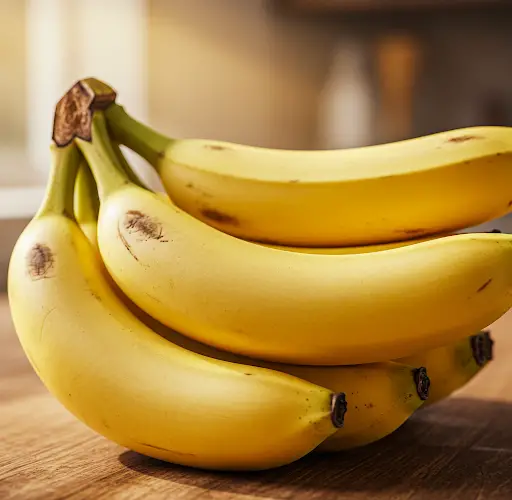How to Properly Plant a Banana Tree in a Pot
Bananas are unique fruits because they do not contain seeds. Instead, the small black dots you see on the banana are unfertilized ovules. The bananas you typically consume, such as prata, maçã, nanica, ouro, and da terra, are cultivated through human intervention and do not grow from seeds. These types of bananas are propagated through the division of rhizomes, while ornamental bananas (which are smaller and often colorful) do contain seeds. This guide is especially for those who want to grow bananas in a pot, and I’ll walk you through every step to successfully cultivate bananas that will eventually produce fruit.
Preparing the Right Substrate
The most important part of planting a banana tree in a pot is preparing the right soil mix. The soil should be well-draining and rich in nutrients. Here’s the mix I recommend:
-
70% soil
-
15% coarse construction sand
-
15% crushed charcoal
-
1 kg of worm castings (which will help with fertilization)
The charcoal and sand will assist with drainage, which is essential since banana trees need plenty of water. Proper drainage helps prevent the roots from rotting. The worm castings will enrich the soil by adding beneficial microorganisms, promoting healthy root development.
Once you have all your ingredients ready, mix them well. It’s important to ensure that the charcoal and sand are evenly distributed throughout the soil. This mixture will provide the ideal environment for your banana plant.
Choosing the Right Pot
For optimal growth, choose a pot with a minimum capacity of 50 liters. A pot of this size will provide enough room for the plant to grow and expand. To ensure proper drainage, cover the drainage holes at the bottom of the pot with a piece of cloth, paper towels, or any material that will help keep the soil in while allowing excess water to drain.
Before adding soil to the pot, place a layer of expanded clay at the bottom (about 10 cm deep). If you don’t have expanded clay, you can use bricks, broken tiles, or even small pebbles. This helps with drainage and prevents water from stagnating at the bottom of the pot.
Planting the Banana Tree
Once the pot is ready, it’s time to plant your banana tree. First, add the prepared soil to the pot. Then, create a hole in the center, making it large enough to accommodate the root ball of your banana plant.
Place the root ball carefully into the hole and ensure that the top of the root ball is level with the pot’s edge. If necessary, remove some soil from the sides to ensure the plant sits at the right height. After positioning the plant, fill in the surrounding space with more soil to secure the plant in place.
You can gently press the soil down to help compact it, but avoid pressing too hard. The goal is to ensure that the roots are well-set in the soil, but the soil should not be too compacted as it needs to retain moisture and air for healthy root development.
Watering and Care
After planting, water the banana tree generously. This initial watering will help settle the soil and ensure that the plant starts to take root. Since banana trees require a lot of water, it’s important to maintain consistent moisture, but be careful not to overwater. The soil should stay moist but not soggy.
Banana trees do not like their roots to sit in standing water, so proper drainage is crucial. To help maintain soil moisture, you can cover the top of the soil with a layer of expanded clay, broken tiles, or organic material like dry leaves. This helps keep the soil moist for longer periods and reduces the need for frequent watering.
Growth and Fruiting
If you’ve selected a well-established banana plant (around 6-7 months old), it will begin to grow quickly. It’s common for banana trees to produce around 40 leaves before they start producing fruit. After the plant has grown its leaves, it will eventually start to develop an inflorescence, or flowering stem, which will lead to the fruiting process. This process can take anywhere from 12 to 24 months, depending on the variety of banana.
If you want to speed up the process and have a better chance of fruiting, choose a mature banana plant for planting. A healthy plant that’s already a few months old will shorten the time needed to reach fruiting maturity.
Propagating the Banana Tree
Once your banana tree has grown well, you can propagate it by dividing the rhizome. The rhizome is the underground stem from which new shoots emerge. You can separate the shoots and plant them in separate pots or directly in the soil to grow new banana plants. This is a great way to expand your banana garden if you want more plants.
Conclusion
Planting a banana tree in a pot is a rewarding experience that can lead to delicious fruits. By following the steps above—preparing the right substrate, choosing the right pot, and providing proper care—you’ll have a thriving banana tree in no time. Be patient, as it can take some time for the plant to produce fruit, but with proper care, your banana tree will reward you with beautiful bananas that you can enjoy.



